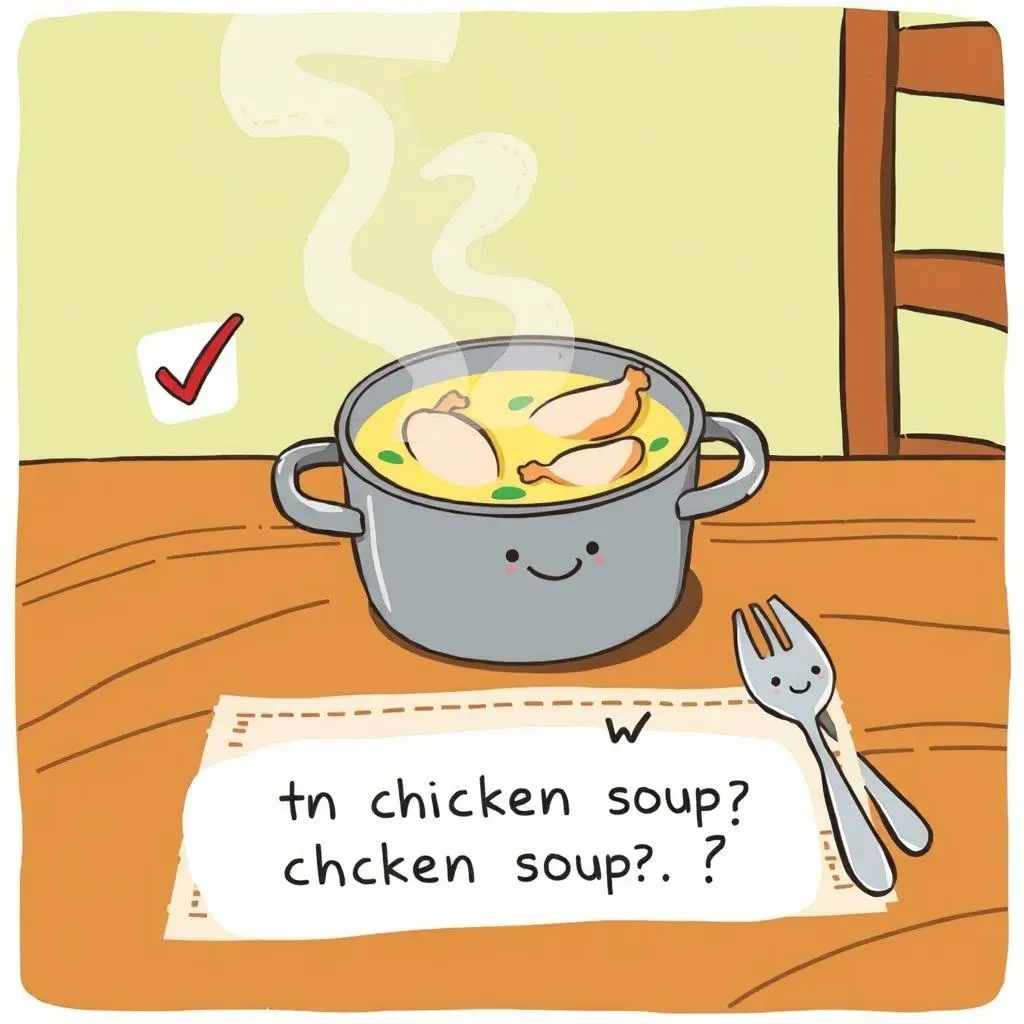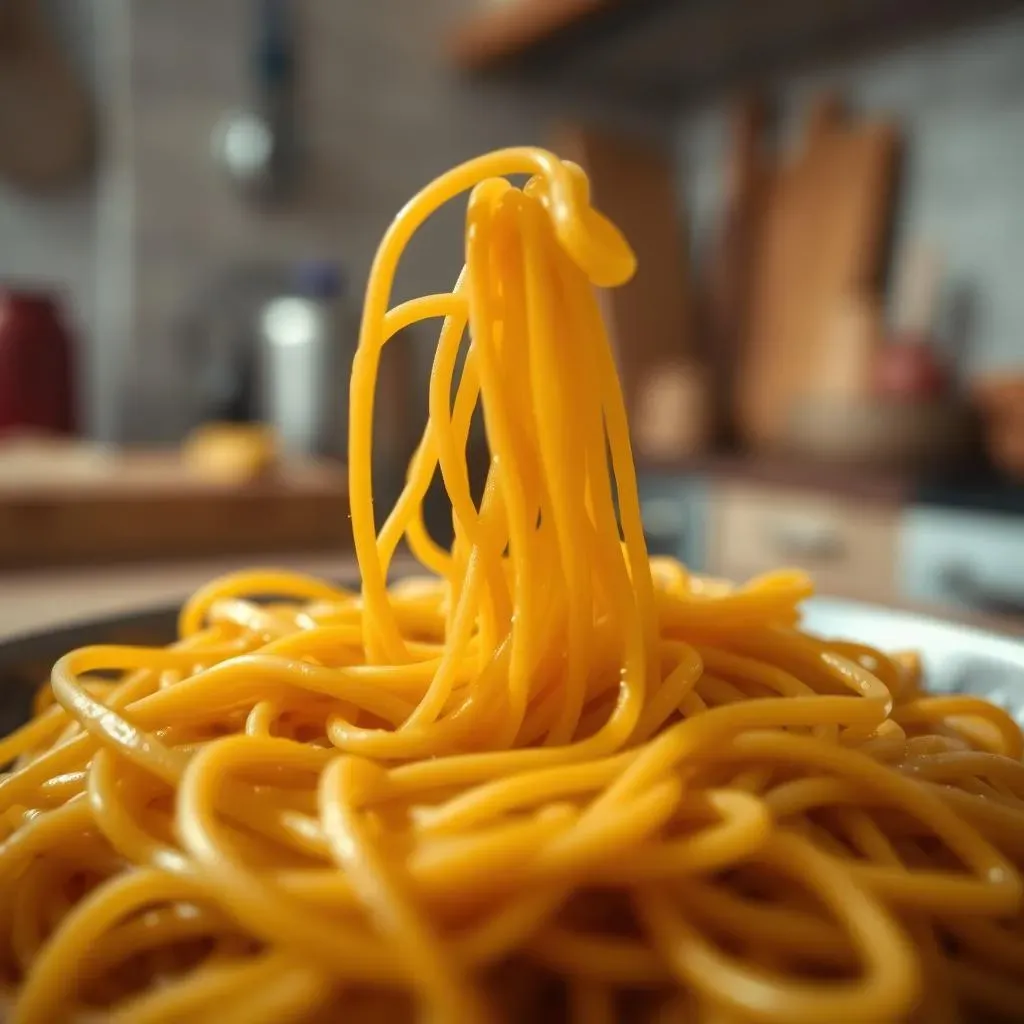Table of Contents
let's be real. You're staring at a pot of chicken noodle soup, and the big question looms: "How do you know when chicken noodle soup is done?" It's not like baking a cake where a toothpick comes out clean. This is a savory symphony of chicken, veggies, and noodles, and each element needs to be just right. We've all been there, right? You're either left with sad, mushy noodles or chicken that’s still a bit… chewy. This isn't some gourmet chef secret; it's about understanding the simple signs. In this article, I’ll walk you through the key indicators to help you achieve that perfect bowl of comfort. We'll look at how to check if the chicken is cooked through, how to avoid overcooking the noodles, and of course, how to trust your taste buds. So, grab a spoon, and let’s get this soup sorted.
The Chicken's Done, But Is the Soup?

The Chicken's Done, But Is the Soup?
so you've got your chicken in the pot, simmering away, and it looks like it's cooked. But hold on a minute! Just because the chicken is no longer pink doesn't mean the soup is ready. First things first, make sure the chicken is cooked all the way through. The easiest way to check? Use a fork; it should slide in easily, and the juices should run clear, not cloudy or pink. If you're using bone-in chicken, the meat should pull away from the bone without much effort. If it’s still clinging on for dear life, it needs more time. Remember, undercooked chicken is a no-go, nobody wants that. Now that you have the chicken part figured out, it’s time to look at the rest of the soup.
Noodle KnowHow: When Are They Perfectly Cooked?

Noodle KnowHow: When Are They Perfectly Cooked?
The Great Noodle Debate
so the chicken is good, now for the noodles. This is where things can get tricky. Nobody likes mushy noodles, right? It's like eating baby food. The key is to not overcook them. The timing will depend on the type of noodle you’re using. Thin noodles like vermicelli cook super fast, while thicker ones like egg noodles need a bit more time. The package instructions are a good starting point, but they aren't always gospel.
I always start checking them a minute or two before the recommended time, just to be sure. You want them to be tender but still have a bit of a bite, what chefs call "al dente". It’s like they’re giving you a tiny hug when you chew them, not falling apart in your mouth.
The "Al Dente" Check
How do you know for sure? Well, the best way is to fish one out with a spoon and give it a taste. Careful, it’ll be hot! If it's still hard in the middle, give it a couple more minutes. If it's already too soft, you've gone too far, my friend. Next time, add the noodles a little later. You want that sweet spot where it's cooked through but still has a bit of resistance. If you are using homemade pasta you need to be more careful, because the cooking time will be considerably less than store bought.
I know that it might seem like a lot, but once you do it a few times, you'll get the hang of it. It’s like riding a bike, you might wobble at first, but eventually you’ll be cruising along with no hands.
Noodle Type | Approximate Cooking Time (after adding to soup) | Texture Goal |
|---|---|---|
Thin Vermicelli | 3-5 minutes | Tender, slightly firm |
Egg Noodles | 6-8 minutes | Tender, but with a bite |
Homemade Pasta | 2-4 minutes | Tender and cooked through |
The Residual Heat Factor
One thing to keep in mind is that the noodles will continue to cook even after you take the pot off the heat. It's like they're having a little after-party in the warm broth. So, if you're planning on leaving the soup to sit for a bit, it's better to undercook the noodles slightly. That way, they won't turn into a mushy mess while you’re busy setting the table or answering the door.
This is especially true if you are planning on having leftovers; Nobody wants to eat mushy noodles the next day. When I make a big batch of soup, I often undercook the noodles a bit, knowing they’ll soften up as the soup cools. It’s a little trick I've picked up over the years, and trust me, it makes a big difference.
The Taste Test: Your Final Judge

The Taste Test: Your Final Judge
Alright, so you’ve checked the chicken, you've wrestled with the noodles, but now comes the real moment of truth: the taste test. This is where your senses get to shine. Forget the fancy cooking shows, this is where you decide if your soup is a masterpiece or needs a little more love. Take a spoonful, make sure it's not lava-hot, and really pay attention to what you're tasting. Is the broth flavorful? Does it taste like chicken, or just vaguely salty water? The broth should be rich, and savory, and you should be able to taste all the ingredients. If it's bland, it might need a little more salt or pepper, maybe even a dash of herbs.
I like to think of the taste test as a conversation with your soup. It’s telling you what it needs, and you have to listen. Maybe it’s craving a squeeze of lemon, or some fresh parsley. Don't be afraid to experiment! This is your creation, and you're the boss. If you’re like me, you will probably add a little bit of hot sauce to it, but that’s a matter of personal preference. Remember, there’s no one-size-fits-all answer here. What tastes perfect to me might be totally different for you, and that’s perfectly fine.
Taste Element | What to Look For | Possible Adjustments |
|---|---|---|
Broth Flavor | Rich, savory, not bland | Add salt, pepper, herbs, or a squeeze of lemon |
Chicken Taste | Should taste like chicken, not bland | Ensure chicken is fully cooked, consider adding more chicken |
Overall Balance | All flavors should blend well | Adjust seasonings, consider other additions |
Also, don't forget to consider the texture. The noodles should be tender, the vegetables should be cooked through, and the chicken should be juicy, not dry. If any of those elements are off, it might need a bit more time or a tweak in the seasoning. The taste test isn't just about flavor, it's about the overall experience. It's about that feeling of comfort and satisfaction you get when you take the perfect bite. Trust your gut, and your taste buds. If it tastes good to you, then you've nailed it. So go ahead, grab that spoon and give your soup a taste, you’ve got this.
Soup's On: Your Chicken Noodle Mastery
So, there you have it. Knowing when your chicken noodle soup is done isn't some mystical culinary art. It's about paying attention to the key players: the chicken, the noodles, and of course, your own taste buds. Don't overthink it. Check for that tender chicken, perfectly cooked noodles that aren't mushy or hard, and a flavor that makes you want to go back for more. You’ve got the know-how now, so go forth and make some soup that's just right every single time. And hey, if you mess up, that's okay too, it's soup, not rocket science. Now, go enjoy that bowl of liquid comfort!
